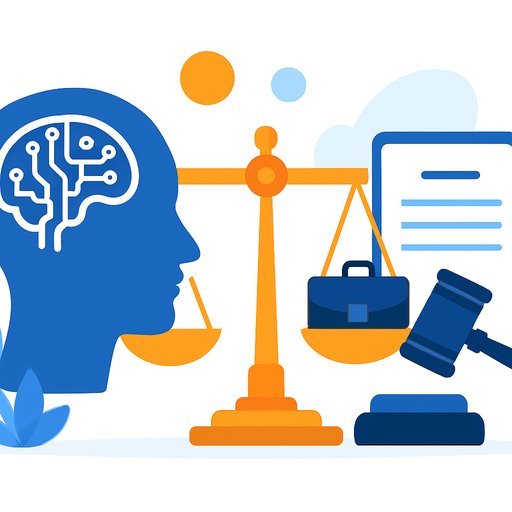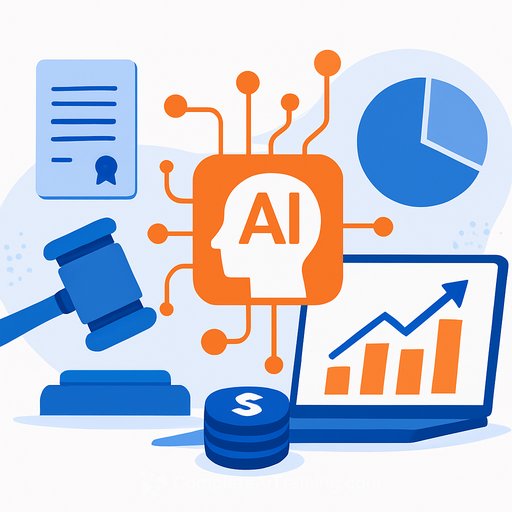AI chatbots, wiretapping claims, and insurance: what security, legal, and risk teams need to line up now
AI chatbots are pulling companies into wiretapping and eavesdropping litigation under federal and state laws. The exposure isn't theoretical-plaintiffs are testing arguments, and insurers are testing exclusions.
Below is a practical breakdown of how these claims differ from earlier cookie/session replay suits, where coverage tends to break, and what steps to take in your policy program, vendor stack, and chatbot configuration.
Why chatbot cases hit differently than cookies or session replay
Cookie and session replay cases often center on whether a tool recorded "content" or just user interactions (clicks, scrolls, keystrokes). Courts drill into whether that qualifies as a communication under the statute.
Chatbots, by design, capture the actual conversation. That shifts the argument to whether the bot is a "party" to the chat (and thus not "intercepting"), or a third-party listener. Consent defenses still matter, but they look different when the data is conversational.
Early decisions are mixed. Some complaints survive motions to dismiss, others don't. Either way, defense and discovery costs start the moment the complaint lands.
Statutory privacy exclusions: where coverage gets squeezed
General liability and cyber forms often include exclusions for "statutory violations." The details matter. Catch-all wording (e.g., "any statute that addresses…") is harder to overcome than exclusions listing specific statutes.
There's a useful parallel from Biometric Information Privacy Act (BIPA) coverage fights. Some courts declined to apply statutory exclusionary language where BIPA wasn't named. Expect similar arguments in chatbot cases.
Don't overlook alternative causes of action. Negligence, invasion of privacy, and unfair practices claims tied to separate conduct may still trigger defense or indemnity even if a statutory-violation exclusion is present.
Common coverage pitfalls we see
- Silent AI exposure: Policies don't say "AI," so carriers argue the risk wasn't contemplated. Ambiguity fuels denials and delays.
- Wrong tower, late notice: Teams tender only to cyber and forget GL, media/tech E&O, or D&O. Claims-made triggers and retro dates trip people up.
- "Security breach" mismatch: Many chatbot suits claim interception, not unauthorized access. Some cyber forms require a defined "breach" or "security failure."
- Publication triggers: GL "personal and advertising injury" may hinge on publication or "oral/written" material. Chat transcripts don't always fit cleanly.
- Vendor gap: The bot vendor is the data handler, but the contract is thin on indemnity, AI/tech E&O limits, or additional insured status.
Practical steps to reduce legal and coverage risk
Consent and transparency
- Show a pre-chat notice that the conversation is recorded, how it's used, and who receives it. Offer a link to your privacy policy before the user types.
- Use an explicit "Start chat" or "I agree" click to capture consent, especially in two-party consent states.
- Display an automated disclaimer at the start of each session. Log consent, timestamps, versions of notices, and user IDs.
- Align retention and deletion rules for chat transcripts. Shorter retention reduces exposure.
Technical configuration
- Disable vendor model training on your data. Keep data processing first-party where possible.
- Mask or redact sensitive fields in real time. Avoid keystroke logging and session replay on chat input fields.
- Segregate chat data from analytics and ad tech. Do not route transcripts through third-party trackers.
- Implement role-based access, audit trails, and clear transcript export controls.
Vendor contracts
- State that the vendor cannot use conversation data for its own benefit. Treat the vendor as your service provider, not a third-party listener.
- Secure AI/tech E&O and cyber insurance from the vendor with meaningful limits; add you as additional insured where possible.
- Lock in data ownership, subprocessor approval, incident notice timelines, and cooperation obligations.
- Add indemnity tied to wiretap/eavesdropping, privacy, and consumer protection claims.
Insurance program adjustments
- Map every chatbot and conversational feature (site, app, contact center, in-product assistants). Tie each to a policy and a vendor.
- Negotiate carve-backs to "statutory violations" and "recording/distribution of material" exclusions for privacy claims, including wiretap statutes and BIPA/CIPA analogs.
- Confirm that "wrongful act," "privacy event," or "media offense" definitions expressly capture chatbot communications and data handling.
- Check retro dates, notice requirements, panel counsel, defense inside/outside limits, and consent-to-settle clauses.
- Prepare a standing tender package for rapid notice to GL, cyber, media/tech E&O, and D&O.
Your first 48 hours after a complaint
- Issue a legal hold. Preserve chat configs, vendor settings, notices, logs, and consent records.
- Tender to all likely carriers. Cite every potentially relevant insuring agreement.
- Notify the vendor and trigger indemnity and additional insured rights.
- Coordinate defense strategy across privacy counsel, coverage counsel, and incident response. Keep communications privileged where possible.
- Avoid changing consent flows before you capture the current state. Preserve first, improve second.
How insurance recovery counsel can help
Pre-dispute, coverage counsel can stress-test your program for wiretap/eavesdropping exposure. They'll flag exclusionary landmines and draft endorsements that fit the way your chatbot actually works.
Once litigation hits, they coordinate notices across towers, frame tender letters to maximize defense, and push for early coverage determinations. The goal: resolve disputes with carriers fast enough to matter to the defense budget.
Policy language moves worth considering
- Add a carve-back: "This exclusion does not apply to claims under federal or state wiretapping/eavesdropping statutes, BIPA, CIPA, or analogous laws."
- Expand covered offenses to include "collection, recording, transmission, storage, or analysis of conversational data by automated systems or AI tools."
- Include defense for regulatory investigations tied to chatbot data practices, where available.
Useful references
Bottom line
Treat chatbot privacy like a communications risk, not just a security risk. Tighten consent, lock down your vendor, and rewrite exclusions that undercut defense.
Do the prep now and you won't be negotiating coverage in the middle of a class action.
If your team needs skills to configure AI tools safely and document controls that insurers and regulators expect, explore practical training options here: Latest AI courses.
Your membership also unlocks:










